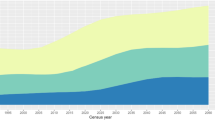Abstract
Vanadium, a trace element in human cells and regarded as an essential nutrient, plays an active role in all tissues. It is known that peroxovanadate-nicotinic acid (POV), a complex compound of vanadium, can decrease hyperglycemia; however, its biochemical mechanism remains unclear. The object of the present study is to explore the hypoglycemia mechanism of POV at gene molecular levels. Rats rendered diabetic with streptozotocin were treated with POV. Total RNA was isolated from rat liver, and phenylalanine hydroxylase (PAH) mRNA abundance was determined by reverse transcriptase-polymerase chain reaction. PAH activity, blood glucose, and lipid levels were measured. Significantly increased hepatic PAH activity and corresponding mRNA with concomitant hyperglycemia and hyperlipemia were found in diabetic rats. These levels returned to normal after POV treatment and accompanied by negative glucosuria, normoglycemia, and normolipemia. The results from the current study indicates one of the mechanisms of POV action is to inhibit PAH gene expression and PAH activity, thus decreasing gluconeogenesis and hyperglycemia. At the same time, POV is able to promote diabetic recovery by lowering hyperlipemia.
Similar content being viewed by others
References
C. Djordjevic and B C. Puryear, Preparation, spectroscopic properties and characterization of novel peroxo complexes of vanadium (V) and molybdenum (VI) with nicotinic acid and nicotinic acid N-oxide, Inorg. Chem. 27, 2926–2931 (1988).
R. K. Murray, Harper’s Biochemistry, 23rd ed, Prentice-Hall Canadian Inc., Toronto, pp. 312–315 (1993).
D. S. Taylor, The effect of streptozocin-induced diabetes on phenylalanine hydroxylase expression in rat liver, Biochem. J. 264, 185–90 (1989).
D. Zhu and B. J. Yu, Quantitative glomerular morphology of the normal and diabetic rat kidney. Acad. J. Sun Yat-Sen Univ. Med. Sci. 11, 38–40 (1990).
S. L. C. Woo, S. S. Gillan, and L. I. Woolf, The isolation and properties of phenylalanine hydroxylase from human liver, Biochem. J. 139, 741–743 (1974).
J. E. Ayling, W. D. Pirso, and J. M. Aijanabi, Kidney phenylalanine hydronylase from man and rat, Biochemistry 13, 78–80 (1974).
D. N. Rao and S. Kaufman, Purification and state of activation of rat kidney phenylalanine hydroxylase, J. Biochem. 261, 8866–8869 (1986).
Y. L. Wang and B. J. Yu, Measurement and assessment of phenylalanine hydroxylase activity, Bull. South-China Univ. Technol. 68(Suppl.) 117–119 (1996).
P. Chomczynski, Single-step method of RNA isolation by acid guanidinium thiocyanate-phenol-chloroform extraction, Anal. Biochem. 162, 156–159 (1987).
B. H. Xu and R. H. Tang, Trace Elements in Life Sciences, Chinese Calculating Press, Beijing, pp. 326–350 (1992).
E. J. Underwood, Trace elements in Human and Animal Nutrition, 4th ed., Academic, New York, p. 250 (1977).
A. Green, The insulin-like effect of sodium vanadate on adipocyte glucose transport is mediated at a post-insulin receptor level, Biochemistry 238, 663–665 (1986).
Y. Shechter, Insulin-mimetic effects of vanadate, Diabetes 39, 1–6 (1990).
Y. L. Wang and B. J. Yu, Effect of peroxovanadate compound on phodphoenolpyruvate carboxykinase gene expression and lipid metabolism in diabetic rats, Drugs Exp. Clin. Res. XXIII(3/4), 111–115 (1997).
S. M. Brichard, B. Desbuquois, and J. Girard, Vanadate treatment of diabetic rats reverses the impaired expression of genes involved in hepatic glucose metabolism: effects on glycolytic and gluconeogenic enzymes, and on glucose transporter GLUT2, Mol. Cell. Endocrinol. 91(1–2), 91–97 (1993).
A. Valera, G. J. E. Rodriguez, and F. Bosch, Vanadate treatment restores the expression of genes for key enzymes in the glucose and ketone bodies metabolism in the liver of diabetic rats, J. Clin. Invest. 92(1), 4–11 (1993).
I. McDowall, The effect of vanadate on selected mRNA abundance in streptozotocin-diabetic rat liver, Biochem. Soc. Trans. 21, 387s (1993).
Author information
Authors and Affiliations
Rights and permissions
About this article
Cite this article
Wang, Y.L., Yu, B. Effect of peroxovanadate compound on phenylalanine hydroxylase gene expression. Biol Trace Elem Res 74, 237–244 (2000). https://doi.org/10.1385/BTER:74:3:237
Received:
Revised:
Accepted:
Issue Date:
DOI: https://doi.org/10.1385/BTER:74:3:237




